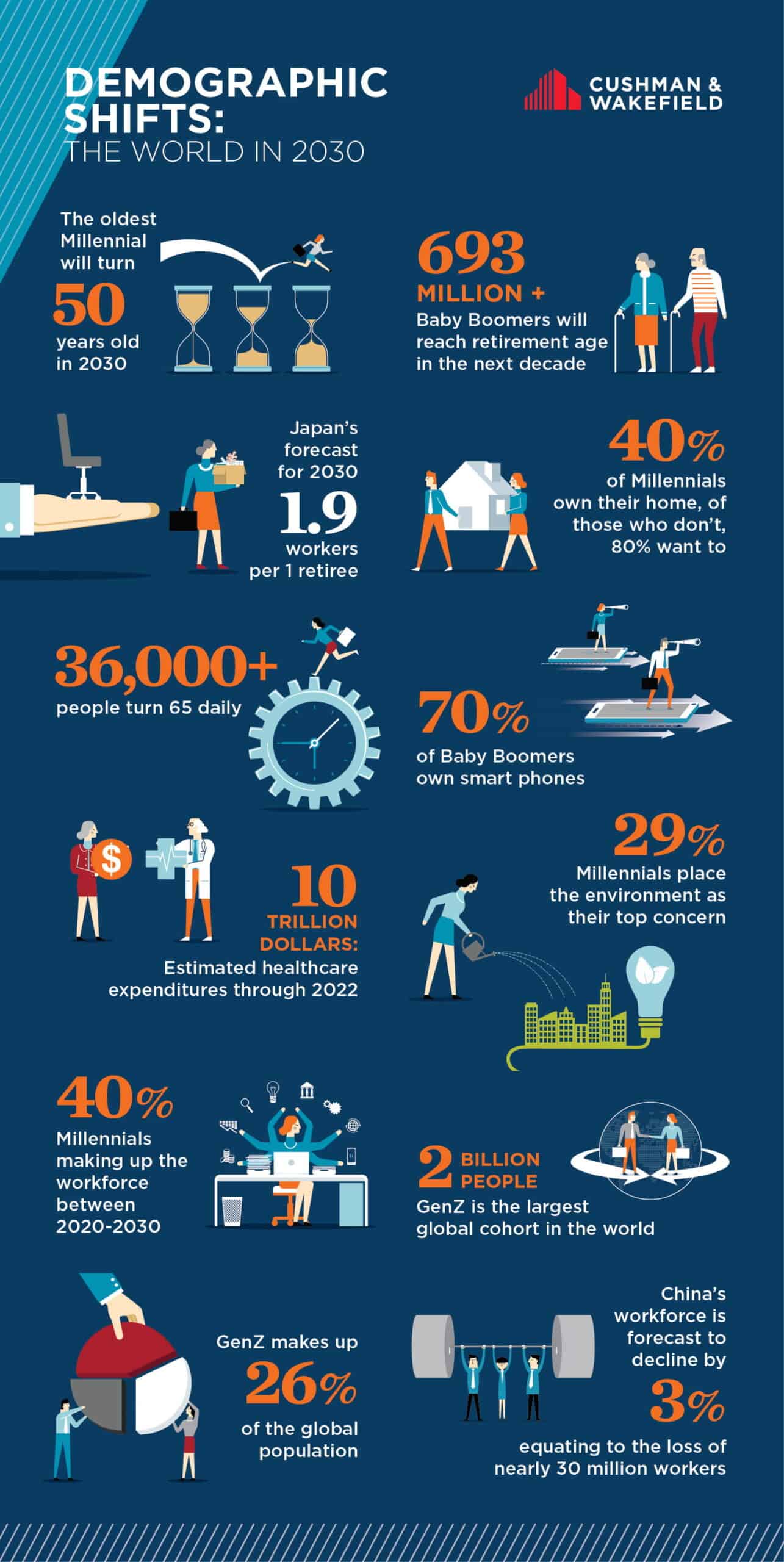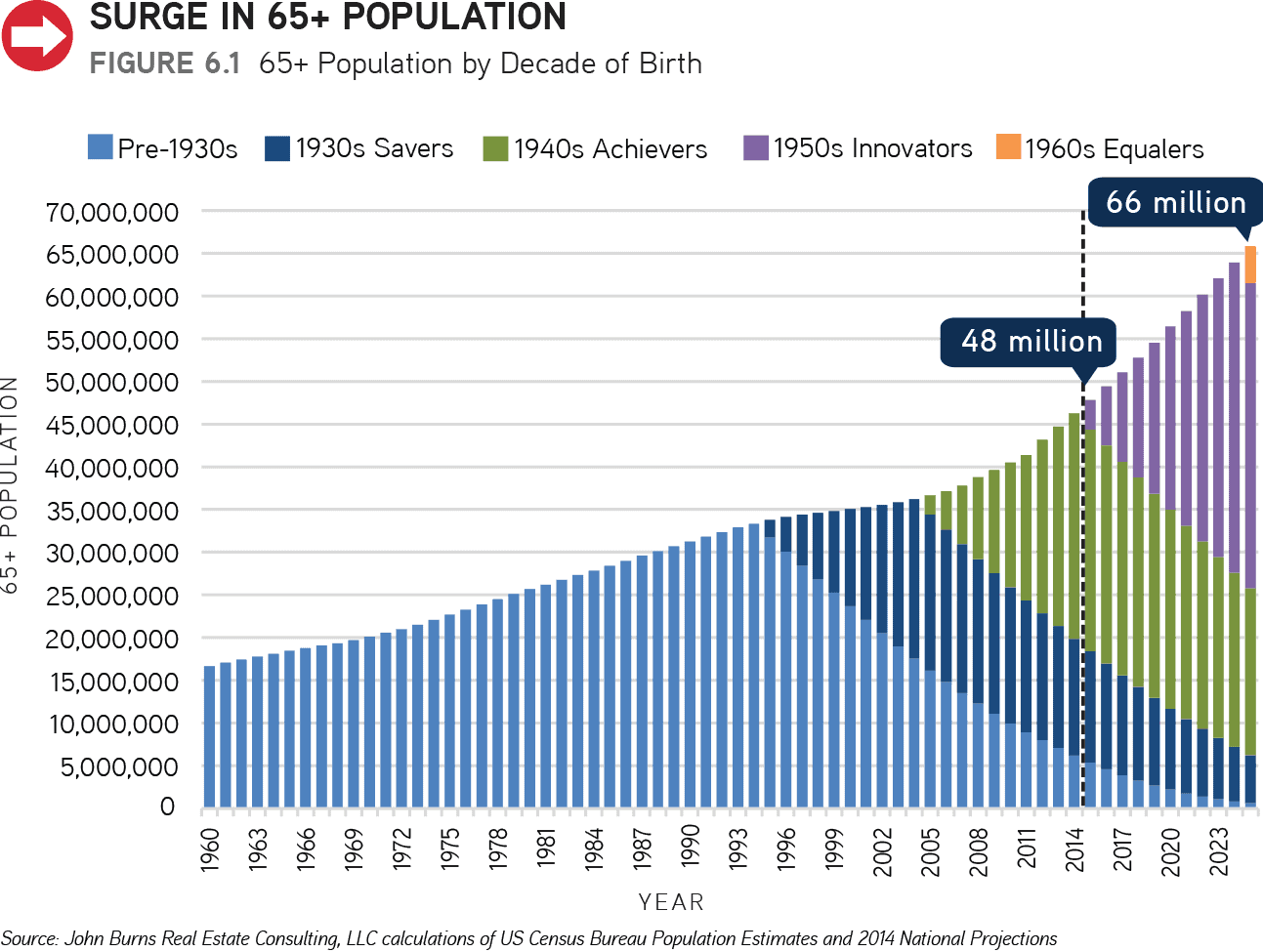In our previous article, we examined migration patterns before and during the pandemic and how this subsequently affected the demand for housing. While the pandemic certainly was responsible for some of these migration patterns, we also found that there were existing trends already in place. The question that remains is: Now that we are returning back to normal, what will happen to the residential real estate market in the coming years?
In this article, we’ll approach the answer to this question by first identifying what segment of the population will most likely have the greatest impact on residential real estate. Then we’ll look at the preferences of this demographic and recent trends that have developed as a result. The chart below shows the distribution of the US population by age as published by Statista.
We can see that the two largest segments of the population are between the ages of 25 to 34 and 55 to 64. These two groups coincide approximately with the generational age range of the Millenials and Baby Boomers, respectively. While both of these groups will likely have a profound impact on real estate over the coming years, this article will focus primarily on the Millenials.
According to a study by Cushman and Wakefield, Millenials will make up 40% of the workforce between the years 2020-2030. Additionally, a study by PWC indicated that the population in family formation years, aged 30-49 will grow by 8.4 million between 2020 and 2030. These numbers suggest that there will likely be a continued demand for suburban locations and single family product types over the next decade, as the increasing number of potential homebuyers will drive demand for this product type. Furthermore, this trend could influence other sectors such as the optimal location of retail, industrial logistics, and to a certain extent office product types (such as co-working spaces).
If Millenials are to be a significant driver of demand for residential housing in the coming decade, it is worth noting some of the key factors that influence where they will choose to live. A study by John Burns Real Estate Consulting showed that Millennials are three times as likely to consider a smaller lot if it reduces their commute time. However, the same study also indicated that some Millenials will still do the very long commute, especially if it provides those in the family formation group the ability to have yards with room for toddlers and/or dogs as well as access to better schools.
Builders and apartment operators have taken note of these shifts in demand, and one of the recent trends that has developed as a result of this is a focus on healthy and sustainable living. Examples include nearby amenities which promote a healthy diet, exercise, and homes designed to be more energy efficient. It is likely that the demand for increased energy efficiency could have a direct correlation with the increase in energy use caused by the work from home mandate.
While the work from home debate is far from over, there little doubt that some level of remote work or education will continue in the future, especially for those involved in the tech space. Including a dedicated work space that is adequately equipped for teleconferencing and high speed internet will likely become a requirement for a considerable portion of the demographic in the future.
In addition to the incorporation of a home office, some builders have begun delivering product that incorporates some element of multigenerational living. As the chart below shows, the US population over 65 is expected to increase by 18 million over the 10 year period from 2014 to 2024. With the potential upcoming real estate needs implied by this growth, multigenerational living may become a necessary option for some families. In our next article, we’ll take a closer look at the implications of this when we review the second largest demographic in the US, the Baby Boomers.



